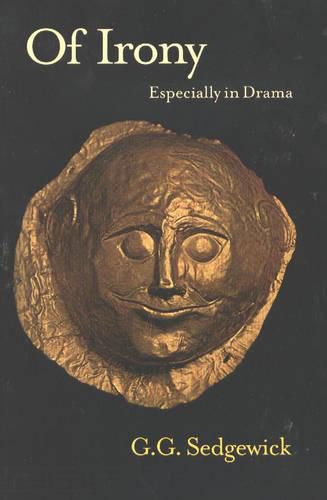Readings Newsletter
Become a Readings Member to make your shopping experience even easier.
Sign in or sign up for free!
You’re not far away from qualifying for FREE standard shipping within Australia
You’ve qualified for FREE standard shipping within Australia
The cart is loading…






Professor Sedgewick begins his discussion by recognising that irony is a way of speaking with which we are all familiar, a figure of speech used in daily conversation. But there are other ironies: those of allegory, of understatement, of detachment, of fate, and especially the irony used in drama. He explores how the various meanings of irony have developed – through Socrates, with his urbane pretence , through Bacon, through the romantic irony of Schlegel and Tieck, through Bishop Thirlwall, whose essay on the irony of Socrates was pivotal in the history of English dramatic criticism. In turning to irony as employed in drama, Sedgewick begins with the ancient classics, his discussion informed by his own familiarity with the original Greek and Latin languages. He then moves on to Renaissance plays, analysing the audience’s pleasure in perceiving the contrast of appearance and reality by means of their superior knowledge and detached sympathy. This analysis is accompanied by masterly expositions of impressive scenes from Shakespeare and Ibsen and concludes with a detailed application of his suggestions to Othello, demonstrating how the spectators see Appearance and Reality as one whole and yet in conflict.
$9.00 standard shipping within Australia
FREE standard shipping within Australia for orders over $100.00
Express & International shipping calculated at checkout
Professor Sedgewick begins his discussion by recognising that irony is a way of speaking with which we are all familiar, a figure of speech used in daily conversation. But there are other ironies: those of allegory, of understatement, of detachment, of fate, and especially the irony used in drama. He explores how the various meanings of irony have developed – through Socrates, with his urbane pretence , through Bacon, through the romantic irony of Schlegel and Tieck, through Bishop Thirlwall, whose essay on the irony of Socrates was pivotal in the history of English dramatic criticism. In turning to irony as employed in drama, Sedgewick begins with the ancient classics, his discussion informed by his own familiarity with the original Greek and Latin languages. He then moves on to Renaissance plays, analysing the audience’s pleasure in perceiving the contrast of appearance and reality by means of their superior knowledge and detached sympathy. This analysis is accompanied by masterly expositions of impressive scenes from Shakespeare and Ibsen and concludes with a detailed application of his suggestions to Othello, demonstrating how the spectators see Appearance and Reality as one whole and yet in conflict.